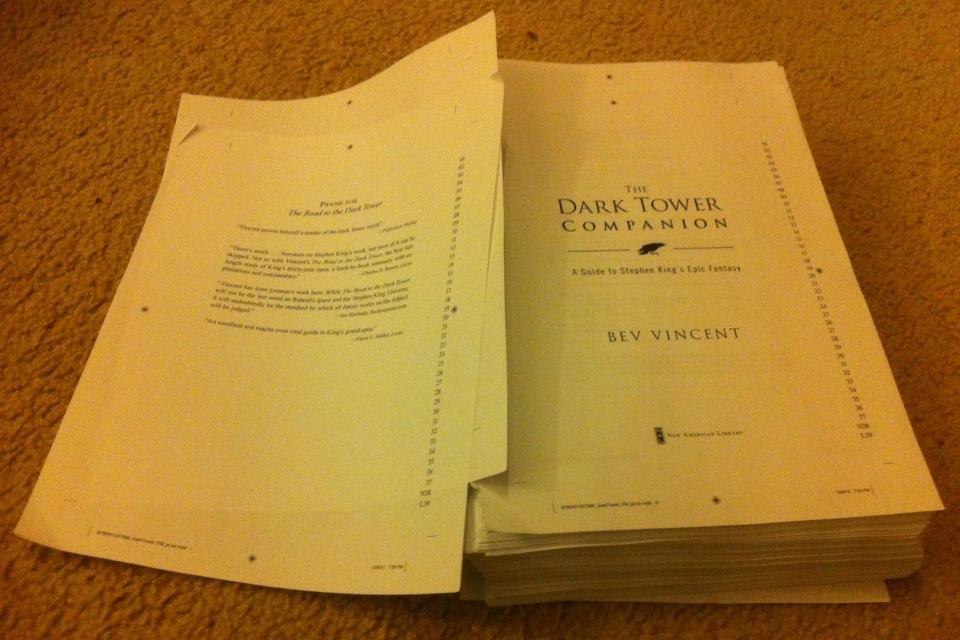[December 2012] When we last spoke, I was working on the copy-edited manuscript of my forthcoming book, The Dark Tower Companion, which will be published in April, less than four months away. My, how the time does fly. When I was writing it, it seemed like publication day was in the distant future.
The copy-editing process took place using the track changes and comments functions of Word. Thus far, I have only printed out the entire book once, and that was shortly after I sent it in to my editor the first time.
This week I received the page proofs, which look like this:
For the first time, I get a sense of what the finished book will look like. Page proofs are printed on only one side, so this stack is twice as large as the finished book, but it’s a ream of paper, and there are marks around the page that indicate the final trim size. Each line is numbered for easy reference. The layout and design are complete. For the first time, I see how the maps I drew will appear in the book, what the section headers will look like, and all the little adornments (see the bird beneath the book’s title above?) the designer has added to the book.
I have until January 3 to report back to my editor, though I will probably finish well before then. The cover letter contains a series of instructions. Don’t try to write between the lines—all comments and corrections are to go in the margins. I only need to send back the pages where I have corrections. Be sure to make a copy before sending back the report in case it gets lost.
And there’s this stern warning: This is not the time to rewrite your text. That ship has sailed, in other words. Small corrections are okay, but if my requested changes end up costing more than 10% of the original design and layout, those costs will be passed on to me.
That was a lesson I took to heart early on, though I didn’t have any direct experience with the potential repercussions. When I was addressing final editorial comments on my short story “Unknown Soldier” for All Hallows, the editor pointed out a passage that she thought was clunky. I agreed, but to de-clunk it was going to require adding a number of words. I tried to take a shortcut, but the editor hated my change even more than the original! I explained: I was trying to keep from messing up the layout. I think the editor was surprised by that. She expressed her appreciation, but gave her blessing to a wordier fix for the problem.
On the other hand, I attended an appearance by crime writer John Lescroart a few years ago. He was in town for a signing, but one of his biggest fans had managed to snag him for a more intimate appearance for the local writers guild. He had a new book coming out and mentioned during his talk that he had received the printed galleys for the novel and decided to entirely rewrite the opening chapter. I can’t even imagine what his editor’s response was to that!
My job for the next couple of weeks is simple and painstaking: to go over a book that I have been working on for over a year and look at it with fresh eyes. I need to make sure that the process of incorporating the copy-editor’s changes and my stets and deles over those, didn’t end up causing missing or extra words, for example. I have to look for previously missed problems, formatting errors, ungainly layout issues and everything else. This is called the “first pass” of proofing, but it’s the main one. There will be the bound galleys at some point, but by then almost everything should be fixed.
That stack of paper above and me are going to be close companions between now and the end of the year.


